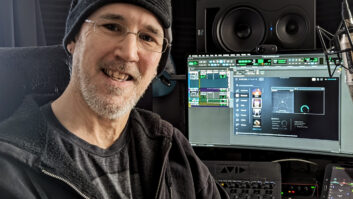You can’t be in two different places at the same time, an immutable law of physics that I recently found myself up against.
I had a choice: I could be in Stamford, Conn., as an assistant coach at the league championship game of my eight-year-old grandson’s Little League team. Or I could be in Washington, D.C., for a party marking the 80th birthday of one of our industry’s legends and a good friend for more than 30 years. (see TWICE, Aug. 5, 2002, p. 16)
What can I say? My friend had already marked 79 birthdays, while this was the first league title game for my grandson. So I was in Stamford (where we won), while many industry luminaries gathered in D.C. to help Jack Wayman celebrate a milestone day.
I did make a post-party call to add my belated congratulations to Jack, also known as “The Silver Fox” because of his hair, which is, and has been since I’ve known him, starkly white.
For those of you who have been in the industry for less than a decade, Wayman is best known as the father of the Consumer Electronics Show (CES), which he virtually launched single-handedly in a gamble that paid off bigger than even he could have imagined. He was at the time (1967) the full-time paid VP of the Consumer Electronics Division (CED) of the Electronic Industries Association. The CED over the years evolved into a trade organization that has grown and expanded vastly — thanks mainly to CES — to become the Consumer Electronics Association.
The big show for our industry in the pre-CE superstore era of the 1950s and 1960s was the Music Show held in Chicago in mid-June, an event which, by the mid-1960s, was being driven by CE exhibitors. As I understand it, it was Wayman’s idea to raise funding for the CED by negotiating a co-sponsorship and revenue sharing agreement with Music Show management. When that was rebuffed he convinced his members to fund the first CES, which was held in New York and timed to compete directly against the Music Show.
Wayman joined CED in 1963 when it was as much of a gentlemen’s club as a serious trade organization, and shepherded it though the industry’s formative and most turbulent years. Eventually he moved to a post with the parent organization, EIA, shortly after the 1984 Summer CES.
Under his stewardship, through its various re-organizations, the trade group took in its first foreign-owned members, and created special engineering organizations to work with Underwriters Laboratories and government groups to sharply improve product safety. The group also helped successfully battle Hollywood’s attempt to have VCRs banned, took the first steps toward the creation of an HDTV standard and developed a strong statistical program. Ultimately, CEA evolved into a forceful lobbying organization battling at the local, state and federal level against legislation that would restrict the sale and use of our industry’s products.
When Wayman finally retired, he became even more active in the industry. He rejoined CEA as a traveling spokesman, touring the nation’s TV and radio stations with a bag full of the new products for show-and-tell. He was well into his seventies when he eased off, and most of his grueling schedule was taken over by Jim Barry. But Wayman still has a few TV locations he visits, and handles a significant number of radio interviews.
Wayman doesn’t dominate the CES scene the way he did in the old days, striding through the aisles with aides in tow making sure everything is running smoothly. But he still makes every event and takes as much pride in the successes of his successors as he did in his own remarkable accomplishments.













